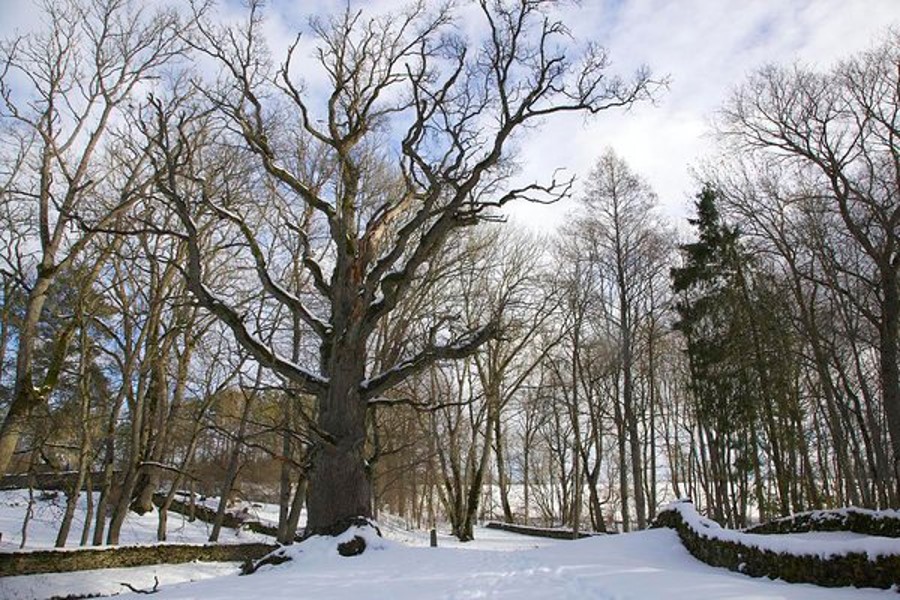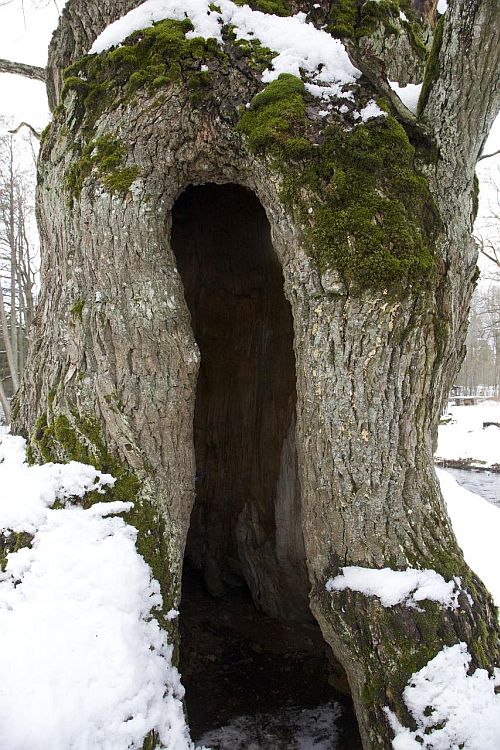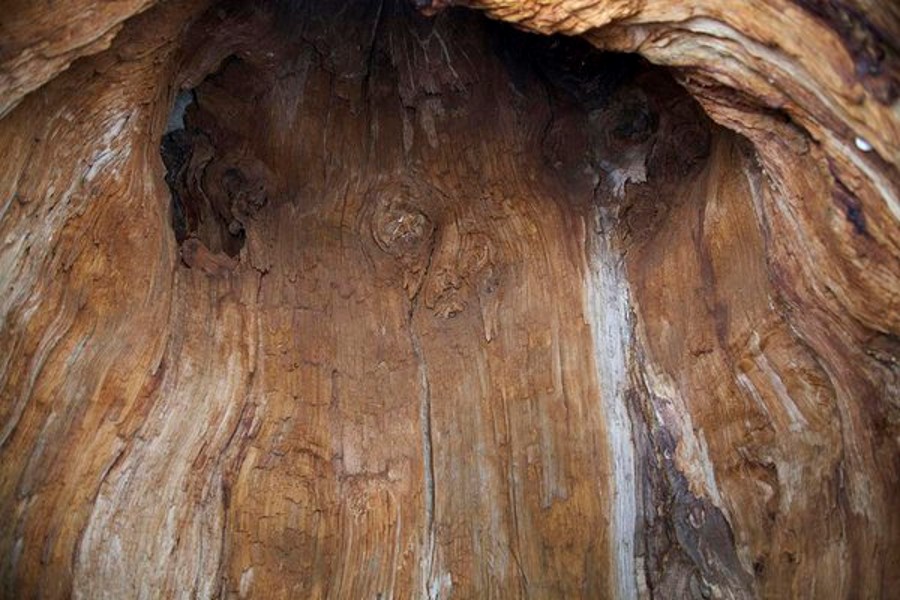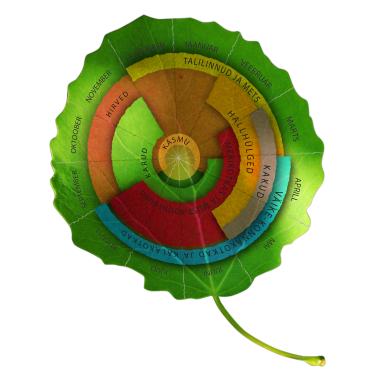Text and photos Tiit Hunt, www.rmk.ee
Translation Liis

.
It is worthwhile to take the trouble to look up the ancient tree with the droll name, since where else but here would a tree have its own guest book!
The stout Tülivere oak hides near Kuusalu on the bank of a stream in the small Allika village. At a first glance the old tree, sheltered between pretty cattle paths and stone fences at the bubbling water, is difficult to see but a map application brings a hiker with dendrological interests unfailingly to the site; the path to the tree is not signposted.
The Tülivere oak is an ancient grove tree that was still in active use in the 20th century but no longer today – the wind tugs at a couple of lonely faded ribbons in the tree crown that someone’s hands tied there long ago.
According to ancient traditions primarily new grain and other first crop products were sacrificed here to guarantee a lasting and rich harvest

There is no information about the exact age of the tree but the door-like opening into the decaying wood is said to have come about in the storm of 1891 that broke off a branch that reached to the ground. The nearly 3,5 metres high room that resulted has easily space for two adults which is what has made the tree famous in folk tradition as the mediator tree for quarrelling married couples – if nothing else helped then the quarrelling couple was made to spend the night in the oak, and by morning all disagreements had been swept away as if by magic.

Measurement results differ somewhat but the height of the Tülivere oak is in the range of 18-21 m and the circumference 570 - 587 cm.
The Tülivere oak has been a witness to important cultural events too.
In the neighbouring farmstead of Tülivere the prototype of author Eduard Vilde’s Prophet Maltsvet, Juhan Leinberg, lived from 1859. Led by him about a hundred peasants from the Kolga area migrated to the Crimea and the last meeting before their departure from Estonia in 1861.





